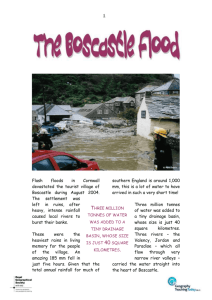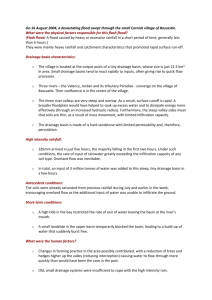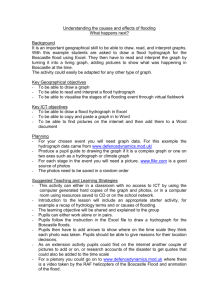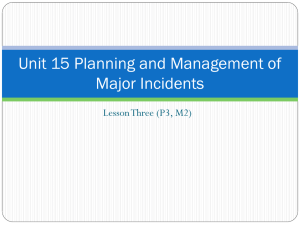Information Sheet
advertisement
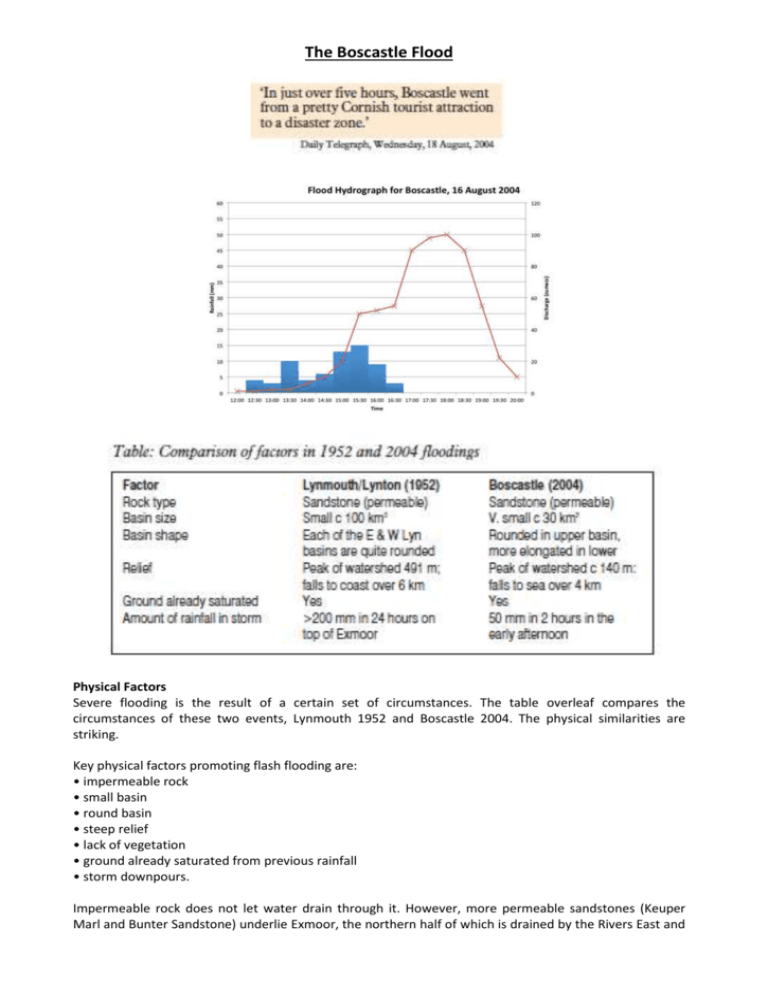
The Boscastle Flood Physical Factors Severe flooding is the result of a certain set of circumstances. The table overleaf compares the circumstances of these two events, Lynmouth 1952 and Boscastle 2004. The physical similarities are striking. Key physical factors promoting flash flooding are: • impermeable rock • small basin • round basin • steep relief • lack of vegetation • ground already saturated from previous rainfall • storm downpours. Impermeable rock does not let water drain through it. However, more permeable sandstones (Keuper Marl and Bunter Sandstone) underlie Exmoor, the northern half of which is drained by the Rivers East and West Lyn. These join just upstream of Lynmouth. However, saturation of the bedrock from previous high rainfall resulted in the sandstone behaving as if it was, in fact, impermeable. The Boscastle area is geologically dominated by Millstone Grit, another variety of sandstone, and the situation was very similar. This effective impermeability encourages overland flow (surface runoff) and shortens the lag time on the hydrograph. In a small drainage basin rainwater is likely to reach a channel in a relatively short time, simply because the distances involved are small. Similarly, if the basin is quite round in shape, flow distances to channels are minimised. Both circumstances contribute to a shortening of the lag time. The River Valency basin around Boscastle is very small. Neighbouring streams are fairly close by, though overall drainage density is not as high as with the many streams flowing northwards off Exmoor in the Lyn system. The relief behind Lynmouth is both higher and steeper than that surrounding Boscastle, where no such mass as Exmoor exists. Nevertheless, individual slopes, especially the valley sides close to Boscastle village, have a considerable gradient. The slopes around Boscastle are also quite well wooded. Larger, denser vegetation does reduce flood risk, but in the upper valley, more dominated by grassland, circumstances are more akin to the grassy slopes of Exmoor. The storm which resulted in the flash flood took place in the early afternoon. 50 mm of rainfall fell in the space of two hours and within another one to two hours the flood waters were in full spate. This represents an incredibly short lag time. Local people found this turn of events difficult to believe, as it was quite unprecedented. Human factors The surge of water through the village was reported as being 10 feet (over 3 m) high. At one stage it was made worse by the street pattern and certain man-made structures. The village car park lies at the top end of the main street. Cars parked here were among the first objects to get washed down. One became trapped under the bridge carrying the road across the river. In its turn, it then caught even more material, branches especially. Water piled up behind this barrier, and when it gave way, the surge was huge. Many of the cars which began the day in the car park ended up wrecked in the harbour (50 in all). Others were just dumped by the floodwaters at all angles up and down the village main street.
